Non-Caucasian Rhinoplasty
Anatomic Variation and Structural Balance
This page summarizes surgical concepts for trainees and colleagues; it is not intended as medical advice.
Rhinoplasty, or nasal reshaping surgery, must be tailored to the unique anatomy and aesthetic goals of each patient. This is especially important when treating patients who do not identify as Caucasian. While the term “ethnic rhinoplasty” has been used in the past, this catch-all label is problematic — it can unintentionally group together widely diverse features and cultural values under a single category. Dr. Most takes a more respectful and individualized approach, focusing on a modern understanding of different nasal types and the goals of non-Caucasian patients.
Respecting Identity and Aesthetic Preference
A key principle of rhinoplasty in non-Caucasian patients is avoiding the assumption that all patients want their noses to look more “Western.” Many patients of Asian, African, Middle Eastern, or Latino descent seek changes that preserve their ethnic identity rather than erase it. For example, they may desire improved nasal balance, refined tips, or enhanced breathing — but not necessarily dramatic changes to the bridge height or overall shape. The surgical approach must therefore be rooted in both anatomical knowledge and cultural sensitivity.
Understanding Nasal Variation
In medical anthropology, noses are often described using structural terms such as leptorrhine, mesorrhine, and platyrrhine, based on nasal width, projection, and other skeletal characteristics. These categories describe tendencies in nasal shape rather than racial identity — and they are not strict boundaries but part of a spectrum seen across all populations.
Leptorrhine noses tend to be narrow and prominent with a high bridge and thin skin — common in European and some Middle Eastern populations.
Mesorrhine noses tend to be moderately wide with less dorsal projection — often seen in East Asian or Latino populations.
Platyrrhine noses are broader, lower, and often have thicker soft tissue envelopes — commonly seen in African, Southeast Asian, and some Pacific Islander populations.
These structural differences are not aesthetic deficiencies. Instead, they reflect genetic diversity and adaptation to environment and should be respected in rhinoplasty planning.
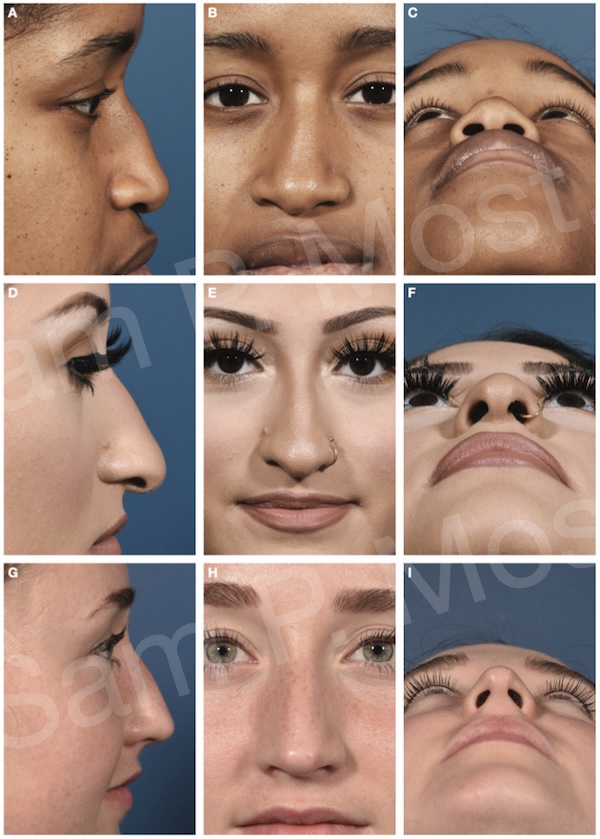
Figure 15–2: Representative patient types across anatomical spectrum.
Skin–Soft Tissue Envelope and Cartilage Balance
Rather than sorting noses by ethnicity, a more effective approach in rhinoplasty is to analyze the balance between the skin–soft tissue envelope (SSTE) and the underlying cartilage framework. Thickness of the skin, flexibility of cartilage, and support of the lower nasal vault all influence surgical planning.
Some patients have thick skin and strong cartilage. Others have weak cartilage and thick skin, which can obscure definition and require reinforcement. Still others may have thin skin with variable support, where any structural changes become highly visible. This balance — not ethnicity — determines surgical technique.
The Role of the Skin and Soft Tissue Envelope (SSTE)
A major factor in rhinoplasty success is the behavior of the SSTE. The thickness of the skin varies by region of the nose — thinner at the radix and supratip, thicker at the tip and alar base. Understanding these zones of SSTE helps the surgeon tailor grafting strategies and avoid overcorrection.
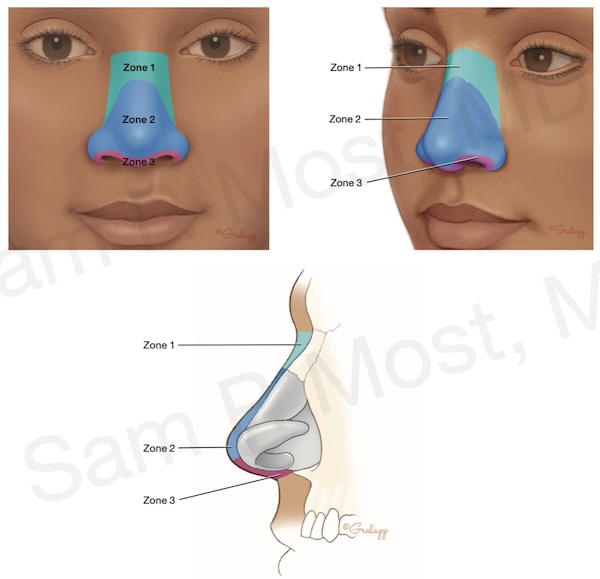
Figure 15–6: Zones of skin and soft tissue thickness across the nasal profile.
For patients with thicker skin, precise framework sculpting may be hidden by soft tissue bulk. In these cases, rather than aggressively thinning the skin (which is rarely effective), it is often more successful to strengthen the cartilage structure underneath to provide long-term tip definition and stability.
Support and Grafting Strategies
In many non-Caucasian rhinoplasty cases, structural grafting is essential. Patients with low bridge height or weak support often benefit from grafts that increase projection while preserving natural contours.
Common techniques include radix grafts for subtle bridge augmentation, spreader grafts to open the middle vault and improve breathing, septal extension grafts (SEGs) for tip projection and stability, and rib grafts when more material is required.
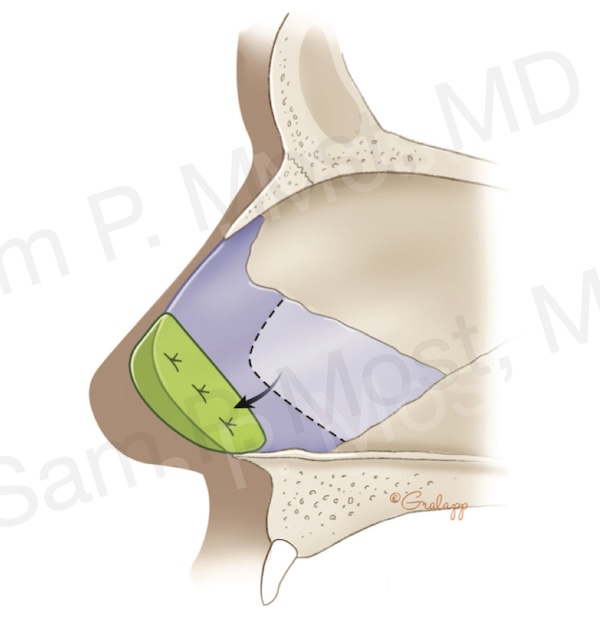
Figure 15–10: Septal extension graft (SEG) providing support for tip projection.
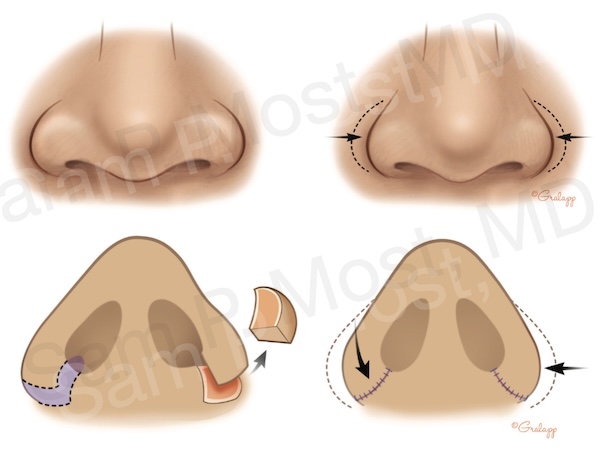
Figure 15–11: Use of radix and spreader grafts to support the dorsal profile.
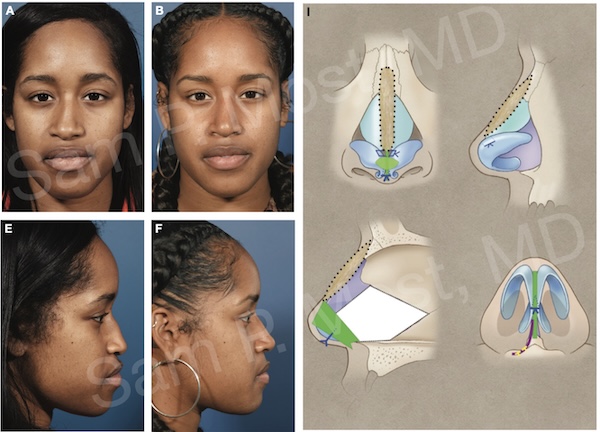
Figure 15–12: Patient with SEG and radix grafting to enhance nasal tip and bridge height while preserving ethnic identity.
Dorsal Narrowing
For some patients, particularly those with platyrrhine or mesorrhine characteristics, a key goal is dorsal narrowing. In these cases, surgeons often use osteotomies (controlled bone cuts) along with augmentation grafts to shape the bridge.
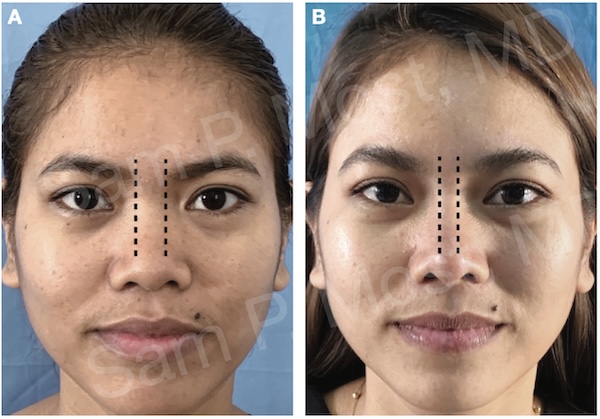
Figure 15–8: Dorsal narrowing with diced cartilage in fascia for conservative contouring in thicker-skinned patients.
Patient Examples: Customized and Culturally Aware
In Figure 15–14, a patient with low dorsal projection and thick SSTE underwent graft-based augmentation to improve nasal balance while maintaining identity.
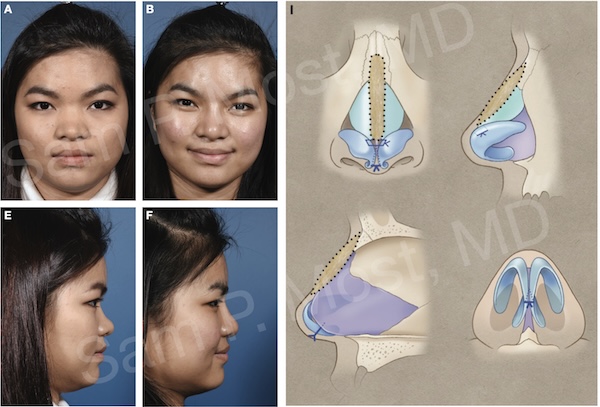
Figure 15–14: Patient with dorsal augmentation using cartilage grafting techniques.
In Figure 15–15, another patient requested tip refinement without significant structural change. The result was a more defined yet natural nose in harmony with the rest of the face.
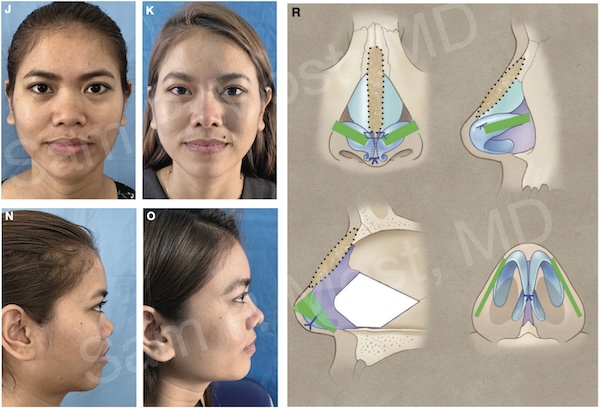
Figure 15–15: Subtle tip refinement in a patient with strong natural dorsal profile.
Final Thoughts
Modern rhinoplasty embraces a personalized, anatomically driven, and culturally sensitive approach. This is not about creating a “standard” nose — it is about enhancing the individual beauty of each patient, honoring heritage, and achieving natural results through precise and thoughtful technique.
Whether the goal is structural support, subtle refinement, or functional breathing improvement, Dr. Most’s textbook offers a tailored approach for surgeons, grounded in both surgical expertise and respect for diversity.